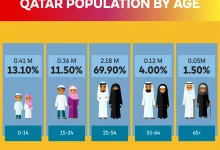As of recent estimates, Bangladesh is home to a population of approximately 170 million people, making it one of the most densely populated countries in the world. Situated in South Asia, this country has experienced significant demographic changes and growth over the decades, reflecting its complex socio-economic dynamics and developmental progress.
Historical Context and Growth Trends
Bangladesh, formerly known as East Pakistan, achieved independence from Pakistan in 1971. At that time, the population was approximately 75 million. Since then, the country has undergone rapid demographic changes. The population growth rate, which peaked in the 1970s and 1980s, has since shown signs of stabilization due to effective family planning programs and improved healthcare services.
Population Density and Distribution
The population density of Bangladesh is exceptionally high, with around 1,265 people per square kilometer as of recent figures. This density is a reflection of the country’s limited land area, which is about 147,570 square kilometers, and its large population. The population is unevenly distributed, with a significant concentration in the urban areas, particularly in the capital city, Dhaka. Dhaka, with a population exceeding 21 million, is one of the most densely populated cities in the world. Other major urban centers include Chittagong, Khulna, and Rajshahi, which also experience high population densities.
Demographic Structure
The demographic structure of Bangladesh is relatively youthful, with a significant proportion of the population being under the age of 30. This youthful demographic presents both opportunities and challenges. On one hand, it provides a potential demographic dividend, contributing to a growing labor force. On the other hand, it necessitates substantial investments in education, healthcare, and job creation to harness this potential effectively.
Urbanization and Migration
Urbanization is a notable trend in Bangladesh, with more people moving from rural areas to cities in search of better economic opportunities. This migration has led to the expansion of urban areas and the growth of informal settlements, often characterized by inadequate infrastructure and services. The rapid urbanization has also put pressure on city resources, leading to challenges such as traffic congestion, pollution, and housing shortages.
Socio-economic Implications
The high population density and rapid urbanization have significant socio-economic implications. For instance, the demand for resources such as water, energy, and food is heightened. Additionally, the pressure on public services like education, healthcare, and transportation increases, necessitating effective policy measures and infrastructure development. The government of Bangladesh, along with various international organizations, has been working to address these challenges through various development projects and policies aimed at improving living standards and promoting sustainable growth.
Family Planning and Health Initiatives
Family planning and health initiatives have played a crucial role in managing population growth. Bangladesh has made notable progress in reducing fertility rates through widespread family planning programs, education, and access to contraceptives. The country has also achieved significant improvements in maternal and child health, which have contributed to lower mortality rates and enhanced life expectancy.
Economic Development and Employment
The growing population has had a profound impact on Bangladesh’s economic development. The country has experienced robust economic growth in recent years, driven by sectors such as textiles and garments, agriculture, and remittances from abroad. The large and youthful population has provided a substantial labor force, which has been crucial for the expansion of these sectors. However, ensuring sustainable employment opportunities for the growing population remains a key challenge.
Educational and Social Advancements
Education has been a major focus for Bangladesh, with significant investments made in improving literacy rates and educational outcomes. The government has implemented various programs to enhance access to education, particularly for women and marginalized communities. These efforts have led to increased enrollment rates and educational attainment levels, contributing to overall social and economic development.
Challenges and Future Outlook
Despite the progress made, Bangladesh faces several challenges related to its population dynamics. Issues such as poverty, inequality, and environmental degradation continue to affect many citizens. Additionally, the country is vulnerable to natural disasters, such as floods and cyclones, which can have significant impacts on both the population and infrastructure.
Looking ahead, Bangladesh’s future demographic trends will likely be influenced by ongoing efforts to manage population growth, improve living conditions, and address socio-economic disparities. The government’s policies and international support will play a crucial role in shaping the country’s demographic future and ensuring sustainable development.
In summary, Bangladesh’s population dynamics reflect a complex interplay of historical, economic, and social factors. With a large and growing population, the country faces both opportunities and challenges as it continues to develop and advance. Through effective policies and continued efforts to address its demographic challenges, Bangladesh aims to achieve sustainable growth and improve the quality of life for its citizens.

